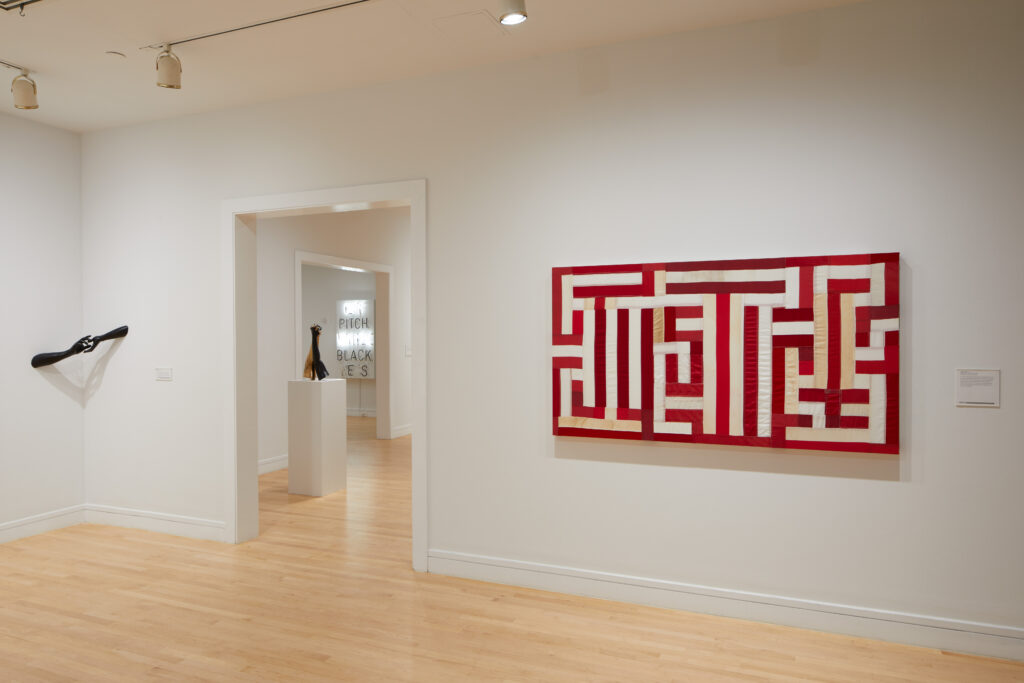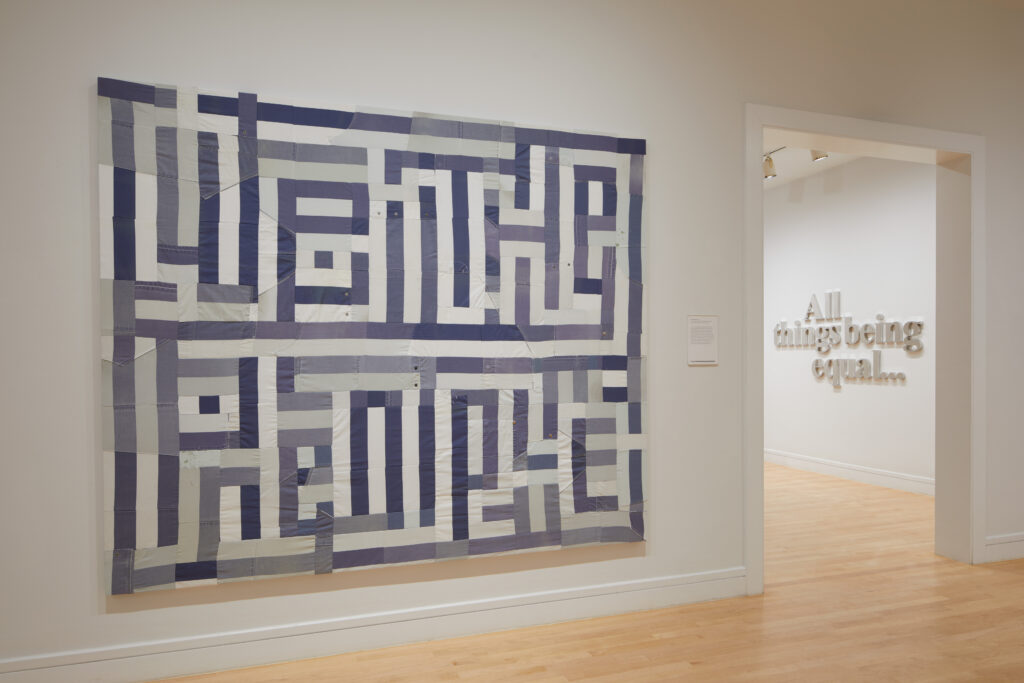

Hank Willis Thomas, Justice (Red), 2021. Mixed media, including U.S. Flags, 39.5 x 71.5 x 2.5 inches.
Hank Willis Thomas, We The People, 2025. Mixed media, including decommissioned prison uniforms, 76.5 x 92.5 x 2.5 inches.
Currently on view in the Van Every Gallery are two compelling works by artist Hank Willis Thomas: Justice (Red), 2021, and We The People, 2025. The exhibition coincides with the recent installation of Thomas’s outdoor sculpture With These Hands, in front of Cunningham Theatre, creating a powerful campus-wide dialogue. Across these works, Thomas highlights the unfinished struggle for racial equality in the United States, forcing us to ask whether the ideals our country proudly professes are actually upheld.
Justice (Red) confronts viewers with a maze-like repetition of red and white stripes, constructed from decommissioned U.S. flags– symbols of national pride and patriotism. At first, the piece appears purely abstract. But by shifting one’s vantage point, the word “Justice” emerges from the pattern. This piece reminds us that our experiences are altered by perspective. Thomas once said, “The most revolutionary thing a person can do is be open to change,” and Justice (Red) emphasizes that message. If we change our perspective and are open to new ideas and values, we can see the oppression that other people face, and we are encouraged to take action against it.
We The People functions in a similar manner. Initially, the blue and white stripes appear decorative and cryptic. Yet, by shifting your perspective, the opening phrase of the U.S. Constitution reveals itself. These words assert that governmental authority derives from us, citizens, united in shared power. He creates the stripes from decommissioned prison uniforms, asking the uncomfortable question: Who has truly been included in “We the People,” and who has been systemically excluded? Thomas’s work exposes the enduring gap between the democracy we claim and the democracy we live.
Across both pieces, perspective becomes the message:
if we do not challenge the way we look at power, identity, and justice, we risk remaining blind to inequality.
Thomas ties these contemporary critiques to tradition as well. Both works reference quilting, a practice carried forward for generations in his own family. They also reference the Gee’s Bend, Alabama, quiltmakers whose quilts, born from necessity and worn fabrics, have become some of the most influential contributions to American art. Thomas reinterprets that heritage on a national scale, stitching together the symbols of our country into questions we cannot ignore.
-Sabrina Bonavita ’26
